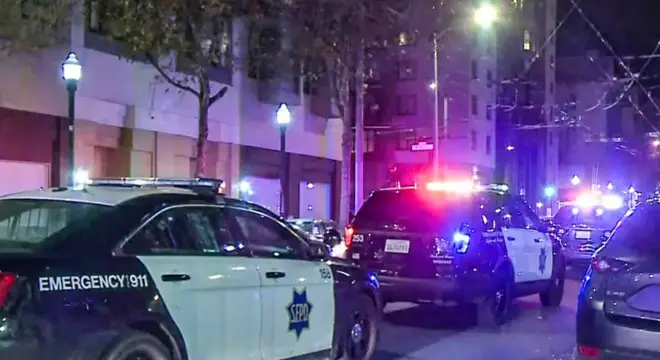East Louisville Home Engulfed in Early Morning Fire, Resident Evacuated
I woke up to the news of a house fire in East Louisville that displaced a resident early Sunday morning, and honestly, it hit me how unpredictable life can be. Just before 3 a.m., firefighters from Anchorage Middletown Fire & EMS rushed to the 17000 block of Seven Green Lane, near the Polo Fields Golf Club.
When they arrived, flames were already pushing through the roof — a terrifying sight that reminds you how quickly a quiet night can turn dangerous.
Thankfully, no one was inside at the time; the resident happened to be out of town. The blaze was brought under control in under an hour, showing the efficiency and bravery of the first responders. Still, one person’s home was disrupted, and the fire serves as a stark reminder that safety precautions are never optional.
Even in situations like this, I find myself thinking: could this have happened to anyone of us? And what small steps could prevent it from escalating? Later, we’ll dive into those practical takeaways so you can protect your home and your loved ones.
Firefighter Response & Control
I went through the Anchorage Middletown Fire & EMS Facebook page to get a sense of how the team responded, and honestly, it’s reassuring to see the level of professionalism on display.
Just before 3 a.m., the firefighters arrived at the home on the 17000 block of Seven Green Lane in East Louisville to find flames already pushing through the roof. The early morning timing meant that if anyone had been inside, the situation could have been far more dangerous.
What struck me most is how coordinated and efficient the team was. Within an hour, the fire was under control, limiting damage and preventing it from spreading to nearby homes. Watching these updates makes you appreciate the rigorous training and bravery required to handle such emergencies. It also reminded me personally to always know my local fire department’s contact info and emergency protocols — in a crisis, every minute counts.
Beyond just the firefighting efforts, the Facebook posts show the human side of the response. Crews communicated updates, reassured the public, and shared images that give neighbors a real-time sense of safety. As I read them, I couldn’t help but think about how crucial transparency and communication are during emergencies — they calm panic and help the community stay informed.
Cause & Investigation
According to WDRB, the cause of the fire is still under investigation. Thankfully, no one was home at the time; the resident was out of town, which prevented injuries. However, the home itself sustained roof damage, and one person was displaced, which is stressful even when temporary.
While officials haven’t confirmed a cause, it makes me think about potential triggers like electrical malfunctions, attic or roof problems, or even heating equipment left on accidentally. Fires in attics or roof areas can spread quickly before anyone notices, especially in the early morning hours when everyone is asleep.
I often reflect on my own home — checking wiring, inspecting the attic, and making sure smoke detectors are functional in every room. Small steps like these might seem trivial, but in a situation like this, they could make all the difference.
Another point I noticed is that many local news reports only mention the “cause under investigation,” leaving readers without actionable advice. I want to fill that gap by reminding you to regularly inspect your home for common fire hazards.
Even simple measures — unplugging unused electronics, keeping flammable materials away from heat sources, and testing alarms monthly — can dramatically reduce risk.
While officials haven’t confirmed a cause, you can stay updated on local fire alerts and safety discussions through real-time community updates, which often provide tips on preventing incidents like these.
Resident & Community Impact
One displaced resident may not sound like a huge number, but when you consider what displacement actually means — finding temporary housing, dealing with insurance, managing lost belongings — it’s a significant disruption. Reading about this fire made me pause and think about the invisible stress that comes with it, even when no one is physically harmed.
For the community, seeing a home on fire nearby is a jolt. It’s a reminder that emergencies don’t just affect the house involved; they ripple across neighborhoods. I think about neighbors checking their own smoke alarms or comforting each other while firefighters are on scene. There’s a shared sense of vulnerability, and it makes local emergency preparedness feel very real.
This is why I encourage anyone living in East Louisville, or similar areas, to take small proactive steps: check smoke detectors, clear exit paths, keep an emergency bag ready. These actions might not seem urgent until a situation arises, and then you’ll be thankful you prepared.
Reading about real incidents like this one helps you internalize that urgency in a way that statistics or guidelines alone cannot.
A similar incident happened in Raleigh recently, where a house fire destroyed a home but luckily, the residents were safe read more here.
Fire Safety Takeaways

The image of flames pushing through the roof so early in the morning is a stark reminder that fires can escalate in minutes. It made me rethink my own preparedness, and I want to share some practical steps you can take to minimize risk in your home:
- Smoke detectors: Test them monthly and replace batteries annually. Install one on every floor, including the basement and attic.
- Roof & attic checks: Look for exposed wiring, flammable debris, or signs of wear that could spark a fire.
- Fire extinguishers: Keep them accessible and make sure everyone in your household knows how to use them.
I personally do a walkthrough of my home each month, testing alarms and checking potential fire hazards. It doesn’t take long, and it gives a level of reassurance that’s hard to put a price on. Fires like this one highlight that preparedness isn’t about fear — it’s about empowerment.
Knowing that you’ve minimized risks allows you to sleep better at night and act quickly if something goes wrong.
Tragically, not all incidents end safely — a recent fire in Western Wisconsin left a woman dead while officials are still investigating the cause read more here. This reinforces why taking proactive safety measures is so important.
Broader Lessons & Community Awareness
This fire is a reminder that even with professional fire departments nearby, homeowners play the first critical role in preventing disaster. Local firefighters are trained and ready, but they can only respond once the emergency begins. Prevention, awareness, and readiness fall on us.
I find it useful to share safety tips with neighbors or friends, because preparedness shouldn’t be an individual effort. Discussing evacuation plans, checking alarms together, or even joining community fire preparedness programs can make a difference. The takeaway here is simple: vigilance matters. Even small, consistent actions — inspecting wiring, maintaining detectors, clearing exits — can save lives and property.
Thinking about this incident, I can’t help but ask you: if a fire happened at your home right now, would you and your family be ready? It’s a question worth considering, because preparation transforms fear into control and uncertainty into action.
As we’ve seen in other incidents, like a home fire in Georgia that turned deadly with one victim found inside read more here, community awareness and preparedness can literally save lives.
Local Authorities & Resources
If you live in East Louisville or nearby, it helps to know who to reach in case of fire emergencies. Anchorage Middletown Fire & EMS is the primary responder for the area, and their Facebook page often shares updates, safety tips, and local alerts. Keep their contact number handy — you never know when minutes will matter.
For residents who may be displaced, organizations like the Red Cross or local housing authorities provide temporary shelter and support. It’s worth checking your insurance coverage as well, so you understand what assistance is available if fire damage occurs. Even a quick phone call to confirm coverage and emergency procedures can save a lot of stress later.
Communities also run preparedness programs — fire department open houses, safety workshops, and neighborhood watch initiatives. Participating in these not only educates you but also strengthens neighborhood readiness. I’ve personally found attending a local fire safety demo eye-opening; it’s amazing how small changes at home can make a huge difference during emergencies.
Final Takeaways
Reading about this East Louisville house fire made me reflect on one simple truth: preparedness saves lives. The early morning blaze could have been far worse if someone had been home. Yet, there are lessons we can take away immediately:
- Check your smoke detectors and replace batteries regularly.
- Inspect attics, roofs, and wiring for hazards.
- Keep fire extinguishers accessible and know how to use them.
- Keep emergency contacts, like your local fire department, saved on your phone.
- Review insurance coverage and displacement support options.
Fires are sudden and stressful, but you can turn that fear into action. Take a moment today to walk through your home, identify potential risks, and discuss an evacuation plan with your household.
I want to leave you with this question: if a fire started in your home tonight, would you feel truly prepared? Take a few practical steps now — it’s the best way to protect yourself, your family, and your community
Disclaimer: Information in this article is accurate as of the date of the incident. The cause of the fire is still under investigation. Readers should consult local authorities for the most up-to-date guidance and safety advice.


